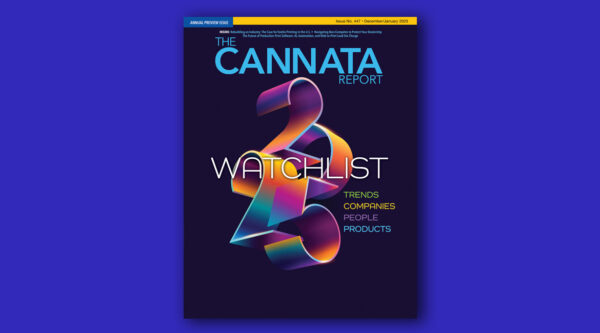Paul Schwartz and Jessica Crowley of Copier Careers reveal how current events are impacting employment in the channel.
There’s been a lot of press in the past few months about “The Great Resignation,” a trend where large numbers of employees are voluntarily resigning from their jobs. We were curious as to how that trend and other employment trends are impacting the document imaging channel. In this first of a two-part interview, Paul Schwartz, president and Jessica Crowley, senior vice president of Copier Careers, the staffing company for the copier industry, discuss the latest industry employment trends. The second part will be published on Wednesday, December 29. The interview has been edited for clarity and brevity.
CR: What’s the biggest change between this year and last year in terms of your client’s hiring needs?
Crowley: The biggest difference is the demand on the client’s end. Paul and I haven’t seen it like this ever. We had to retrain our clients on how quickly to respond to candidates that are interested in an opportunity because candidates, now more so than ever, have so many options, not just in the industry. Other industries that have been suffering are starting to go after candidates within our industry.
If we call a candidate and they say, “I’m not actively looking, but I’m open to a conversation” and I follow up a couple days later, they have three or four other opportunities. If our clients are interested in speaking with a candidate, we tell them we need to know within 24 to 48 hours, otherwise, the candidate will lose interest and focus on other opportunities.
CR: How different is that from say, three years ago?
Crowley: It was common for a candidate to wait a week or at least a few days before a client response. But because they have all these opportunities, and knowing that they can, just like in the housing market negotiate with different companies, they’re looking for the best fit for themselves.
Schwartz: I was on the phone with a large dealer principal two weeks ago. He said that his HR department was having difficulty cranking out an offer to a candidate. It was going to take a couple of days. I told him you don’t have a couple of days anymore. It’s really a day or hours max that you have to get an offer to a candidate or they’re going to have other offers. Whether it’s inside of the industry or outside of the industry, we’re in a real watershed. This goes back 10 or 11 years. This is the culmination of a perfect storm. Ten years ago, we were coming out of the “Great Recession.” The term the industry learned to use back then was “do more with less.” There were a certain number of individuals that left the industry. They either retired or moved on to something else. There was never an influx of new, fresh blood into the industry. And management kind of stayed the same. Here we are 10 years later and COVID changed everything. So, those two words that we all hated the last two years, acceleration and pivot, happened because there was an acceleration of people who left businesses within our channel or left the channel. There were also layoffs because no one knew, for a period of time, what was going to happen. So, the workforce shrank. When the workforce shrank for the industry, a lot of those individuals chose not to come back.
CR: What other factors are contributing to the tight labor market in our industry?
Schwartz: Daycare is a huge issue. Essentially, there’s no daycare infrastructure in the country, so, especially women, can’t come back into the workforce because they can’t arrange for daycare. Elder care became an issue because there’s a shortage of that in the country. And we still have people that don’t want to come back to work, probably rightfully so because of the fear of COVID. The day before, Jess, had a candidate that wanted want a shop position versus a field service technician position. Usually, it’s the reverse of that.
Crowley: He was willing to take a pay cut in order get that position because he’s concerned about going into businesses.
Schwartz: People were assessing their lives and deciding what was and wasn’t important. Sometimes their job wasn’t important, or it wasn’t fulfilling. And there were work conditions, compensation, and location. We have a lot of people deciding they didn’t want to live in a certain metropolitan area anymore. All those pieces came together and the fact that the industry never really, from an employment standpoint, evolved from 10 or 11 years ago. Then, all of a sudden, we have people leaving the industry. We have people, Scott, of your and my generation saying, “We’re out, we’re done. We went through the great recession. We went through other things. We’re not going to manage this.”
We’re seeing changes on the tech side, and on the sales side. Sales is really interesting because sales is a very transient skillset. If you can sell this, you can probably sell something else. A lot of those individuals are leaving the industry and that’s creating a real challenge. There is not enough people to fill the void.
CR: Historically, this has not been common in the copier channel, right?
Schwartz: We went into this, as far as we were concerned, with zero unemployment in the copier channel. If you’re qualified in the copier channel and you’re unemployed, we assume there’s something wrong with your background or your work history because there’s no excuse for it. There’s some short-term remedies and some long-term remedies. The short-term remedies to Jess’s point are when we find candidates for clients, they have to react quickly.
CR: No matter what the position?
Schwartz: No matter what the position, they can’t mess around. We talk a lot with our clients about the practical over the perfect. So, if they have 10 items that they want from a candidate and we can find a candidate with six or eight, usually we believe it’s in their best interest to hire that individual because we’re probably not going to find the 10 out of 10.
Our clients need to reimagine positions and seize opportunities. They need to talk with candidates they didn’t to talk with before because those people are looking at some of the issues of change that I talked about previously. Now they want to look at a new organization or make a change. That could be of a great benefit to an organization if they’re open to it. We’re finding a lot of that and we’re able to create a lot of change within organizations by presenting interesting candidates who two years ago never would have been available. That’s short term. The long-term solution is, and Jess has been talking about this non-stop for 11 years, is that the industry needs to start building a back bench and creating programs to recruit people, especially on the technical side. There’s only one way to get into this industry on the technical side and that’s, essentially, be hired by an OEM or a dealer.
Access Related Content



